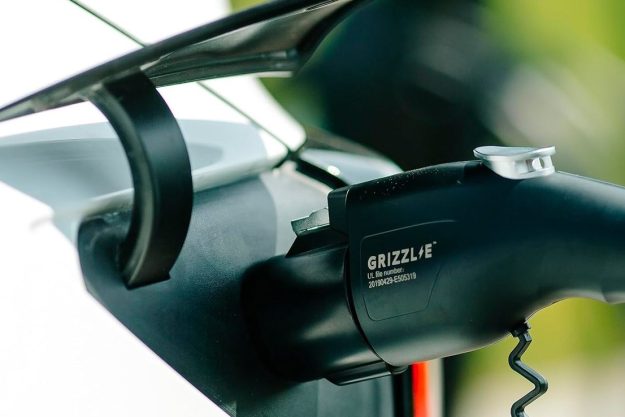Henrik Fisker is nothing if not persistent. After leaving his namesake Fisker Automotive (which has since been resurrected as Karma Automotive), the car designer who helped shaped cars like the BMW Z8 and Aston Martin DB9 started a second company to build another flashy luxury car, the Fisker EMotion.
The new Fisker Inc. announced plans to build the all-electric EMotion in 2016 and it finally revealed the vehicle at the 2018 Consumer Electronics Show (CES) in Las Vegas. First, the basics: The top-tier model will have a 400-mile range, a 160-mph top speed, and will cost $129,000. Fisker said that is the price for cars with the “ultra-large battery pack,” indicating that, like rivals Tesla and Lucid Motors, it will offer several battery options.
The production model shown at CES is toned down quite a bit from the original prototype. But with an unusual array of shapes in place of a traditional grille, unusual-looking headlights, and other details like the butterfly doors, the EMotion is still a wild design. Its silhouette, which is accented by carbon fiber-rimmed 24-inch wheels, reminds us of the original Karma.
We know the EMotion is entirely electric but full technical details remain a little vague. Fisker’s statement claims “multiple” electric motors generate 780 horsepower, enough to send the all-wheel drive sedan from zero to 60 mph in under three seconds. The EMotion will launch with a lithium-ion battery pack big enough to deliver 400 miles of range, more than Tesla’s Model S. Forget about the graphene batteries, though — at least for the time being. It will offer at least 500 miles of range when it receives the solid-state technology Fisker hopes to bring to the market shortly after the turn of the decade, however.
Fisker designed the EMotion with autonomy in mind from the get-go. Multiple Lidar sensors, ultrasonic sensors, and cameras help it drive itself in a variety of situations ranging from stop-and-go traffic to highway cruising. It still comes equipped with a steering wheel so the user can choose to take the wheel when the occasion calls for it.
With its long range and hefty price tag, the EMotion seems aimed directly at the Model S. Fisker will actually borrow a couple of things from the Tesla playbook, including a fast-charging system analogous to Tesla’s Superchargers. Called “UltraCharger,” Fisker says the system will add 100 miles of range in nine minutes. Like other fast-charging systems, though, the time for a full charge could be significantly longer.
Fisker will also adopt the Tesla model of selling cars directly to customers via its website, or through company-owned stores. Tesla has faced significant opposition from car dealers over its direct-sales model, because car dealers view it as a threat to their business. Many states also have franchise laws that prevent automakers from selling cars directly to customers.
The Fisker EMotion will not go into production until 2019 but Fisker has been taking refundable $2,000 deposits since June. Meanwhile, Karma Automotive, the former Fisker Automotive, is once again building the car formerly known as the Fisker Karma, rechristened as the Revero. Karma shipped the first Revero cars to customers last year.
Update: Added official information and pictures about the EMotion.
Editors' Recommendations
- Fisker delays EMotion sedan to focus on Ocean, develop new battery tech
- Sub-$40K Fisker Ocean electric SUV rolls into CES after long-awaited debut
- Watch Fisker unveil its electric Ocean crossover today ahead of CES 2020



